Local people have called them “nem”, which appears in menus of
most restaurants or bistro in Dakar and other cities of Senegal. It also
contributes in dinning tables of special events or festival at this Western
African country.
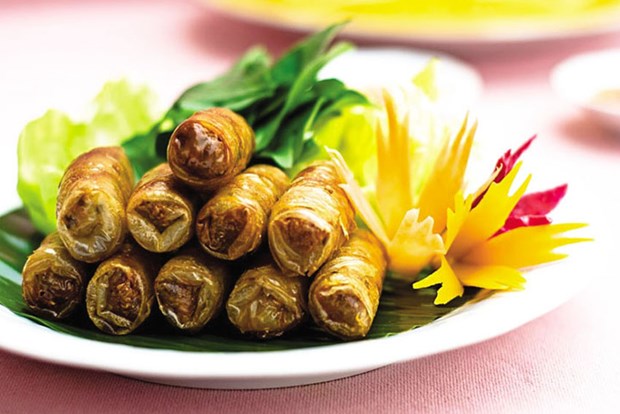
Fried rolls, the favorite Vietnamese food in Senegal.
Just a few local know when Vietnamese fried rolls came to
Senegal. The story of the dish started 7
decades ago, in 1947, when teenage Jean Gomis was on board of SS Pasteur vessel
arriving Sai Gon port. His father, Mr. Emile Gomis was a legionary soldier of
French expeditionary army who was then sent to Vietnam, which used to be a
French colony just like Senegal. French government had commissioned 50,000
soldiers recruited from other French colonies in Africa to the Indochina to
join Vietnam war. Among legionary armies, Senegal soldiers were well known as
riffle archers – tirailleurs sénégalais army.
During the time in Vietnam, Emile Gomis married a local woman
named Nguyen Thi Sau, who would be mother of Jean Gomis. When the war was over,
Mrs. Sau went to Africa with her husband and lived at Dakar the rest of her
life. During the marine journey from Vietnam back to Sénégal, Jean Gomis looked
at the vessel as his paradise, comparing with his father’s poor homeland. At
that time, U90 Jean Gomis still remembers that lifetime journey.
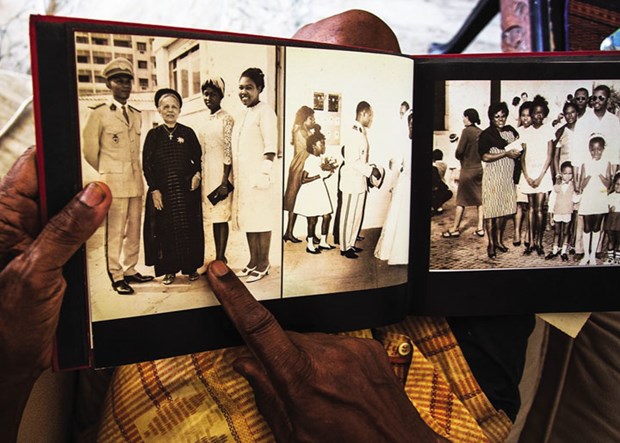
Jean Gomis pointed at the woman in black dress and scarf wrapping her hair as his mother, Mrs. Nguyen Thi Sau.
There were about 100 Vietnamese women following their husbands to
Dakar during Indochina war, according to researches of Helene Ndoye Lame, a
local unofficial historian. Ms Lame could name half of the soldiers’ wives
list. And those women also brought Vietnamese food to the far-far-away Senegal,
in which was fried rolls or fried nem. Merry Bay, a author and Dakar TV
presenter, still remembers her Vietnamese grandmother with a long shiny hair.
“I told my friends that my grandma is the most beautiful”, said Bey. Her
grandmother had always worn Vietnamese traditional clothes of her own. Every
Sunday, her grandmother and Vietnamese friends gathered to cook and to sing
their homeland songs.
However, those Vietnamese women who married Senegal soldiers had
to suffered a bitter fact that they had to follow Muslim and never be allowed
to mention their past in Vietnam. Lots of them faced the poor everyday.
Popularly, Senegal families have lots of children but the men who used to be in
legionary army were not paid. The men had to manage their incomes and secure
their family’s meals by hard working, such as working for restaurants in Dakar
center market: Kermel market.
Jean Gomis’s mother, Mrs Nguyen Thi Sau, taught him how to make
Vietnamese fried rolls: moistening rice paper before rolling then deep frying
the rolls with average temperature so the roll would not stick to each other.
“Children help their mother to do house works and cooking in Vietnam – that is
a great lesson”, said Gomis. Joining the army in his early 20s, now he retired
with General rank but cooking is still his passion of life. On his terrace, he
grows a garden of herbs and spicy leaves. And there was a boy who had paid full
attention looking Gomis cooking, who turned to be the most famous chef in
Senegal – Pierre Thiam.
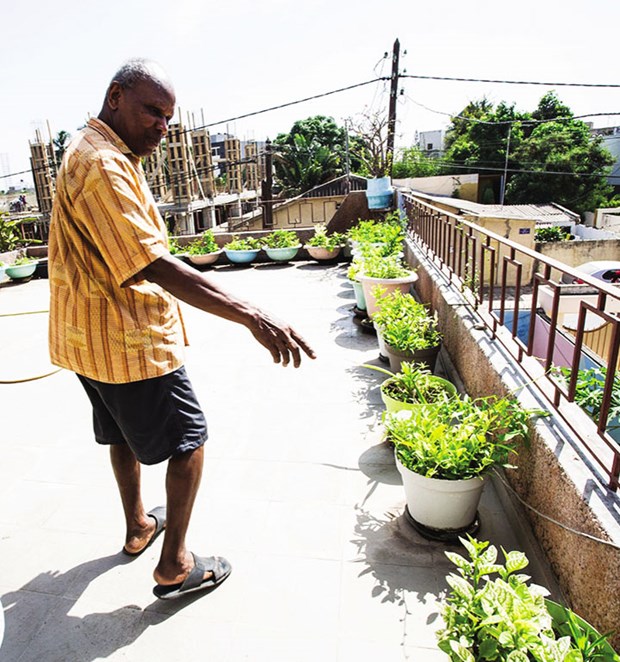
A corner of herbal garden in Gomis’s house terrace.
“Uncle Jean is the only one whom I watched when he was cooking”,
said chef Thiam. Successful with cooking job, Pierre Thiam moved to New York
since 1980s and created his career as Senegal culinary ambassador in the US. He
wrote 2 books of Senegal cuisine as a way to preserve Vietnamese influences in
Senegal cuisine from his uncle Jean Gomis’s recipes. Thiam had spent many
summer in his adolescence with his uncle Gomis, having fresh mint salad from
the small garden, grilled fish with kaffir leaves, and pho. “He is my greatest
inspiration”, admitted chef Thiam.
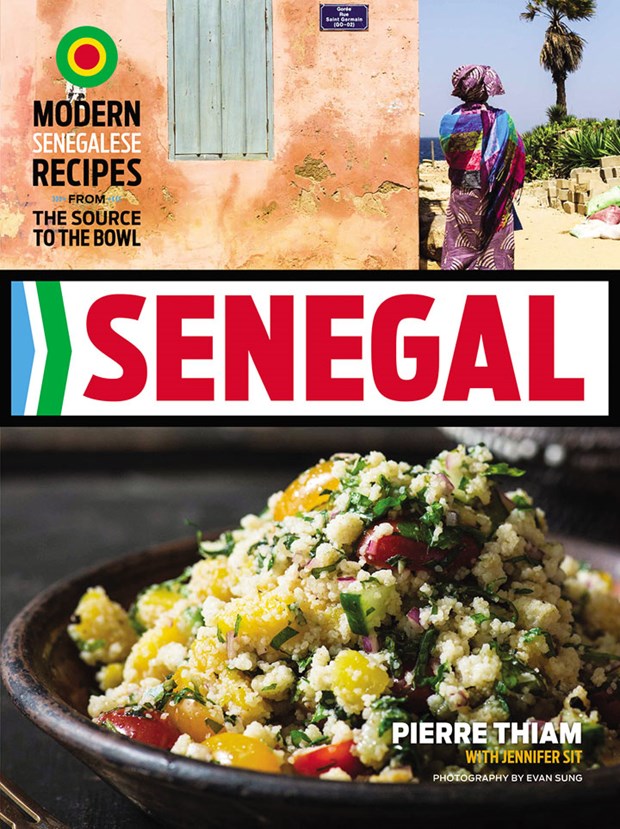
One of the two culinary books of Pierre Thiam was published in the US with plenty Vietnamese influenced dishes from Jean Gomis’s recipes.
Thiam also thinks there is a similarity between Vietnamese and
Senegal spices. For instants, Thiédoudiènne – traditional and spiritual dish of
Senegal – is a mixture of rice, fish, and vegetables in tomato sauce and
seasoned with a sauce from fermented fish and snails. When cooking
Thiéboudiènne in the US, Thiam couldn’t find that Senegal seasoning so he used
Vietnamese fish sauce instead.
Back to the Vietnamese community in Dakar, Jean Gomis is one of
three Senegal people who can speak, read, and write Vietnamese. Another one is
Helene Nodoye Lame. Everytime when Mrs Lame held a meeting among Senegal -
Vietnamese families, over 200 people had come. She said that there was only one
92 years old Vietnamese women here, who came with her husband from Indochina
war. When the whole original generation of Vietnamese community passed away,
their recipes of fried nem (or chả giò) had changed. The change has just gotten
so dramatically that Thiam had to say it’s like day and night. Every time
coming back Dakar, Thiam always has some chả giò, hoping to find the original
taste of it but it has failed him for years.
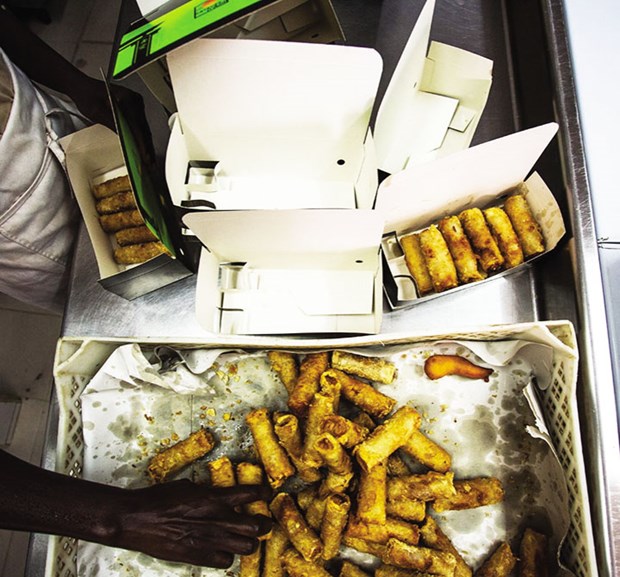
Take-away chả giò at Saveurs d’Asie.
Even though tourist can enjoy very much Vietnamese food in Dakar
lately, such as at Saveurs d’Asie – a take-away chain store established by a
Vietnamese guy, Vietnamese cha gio and other street food would be not original
anymore, Thiam insisted.
Writer: Thu Thao/ DNSGCT
Translator: Thu Pham